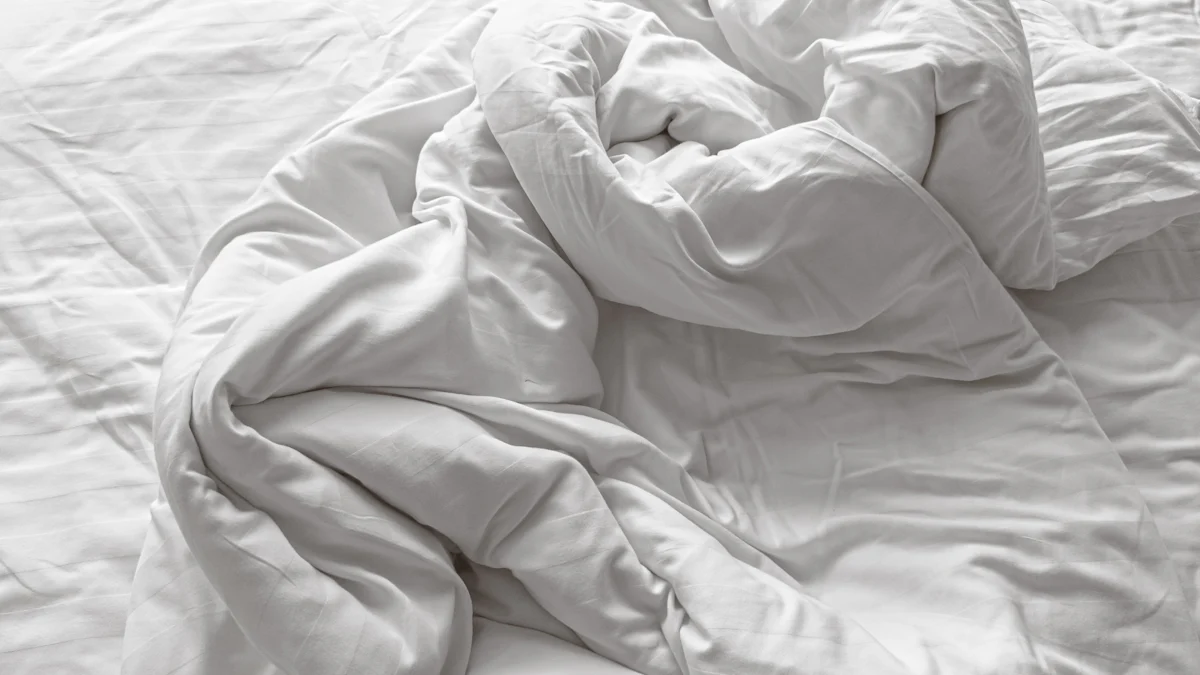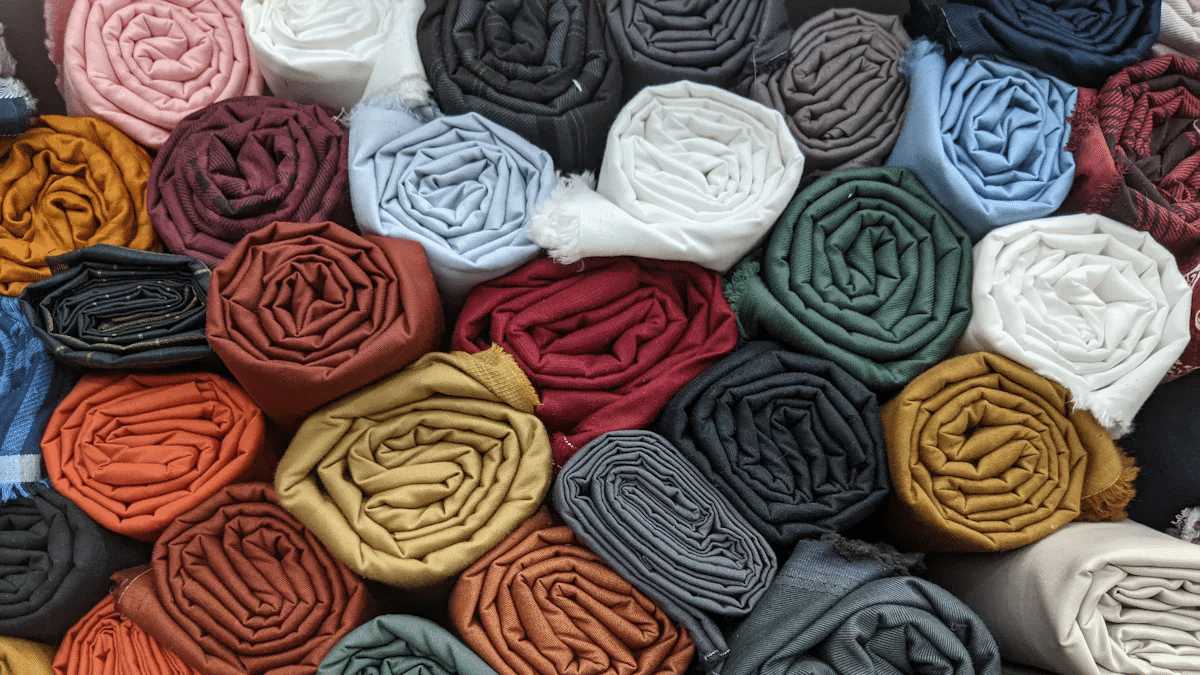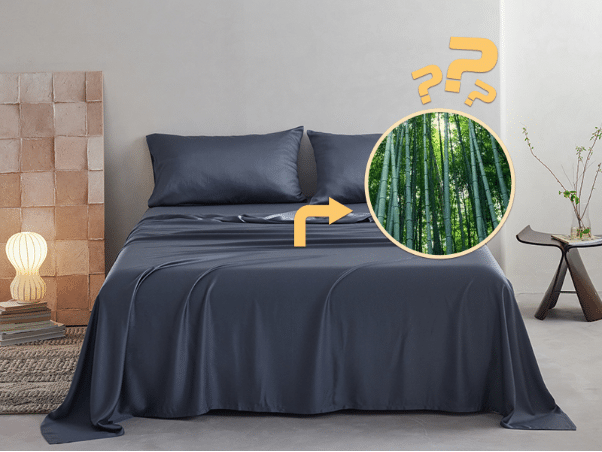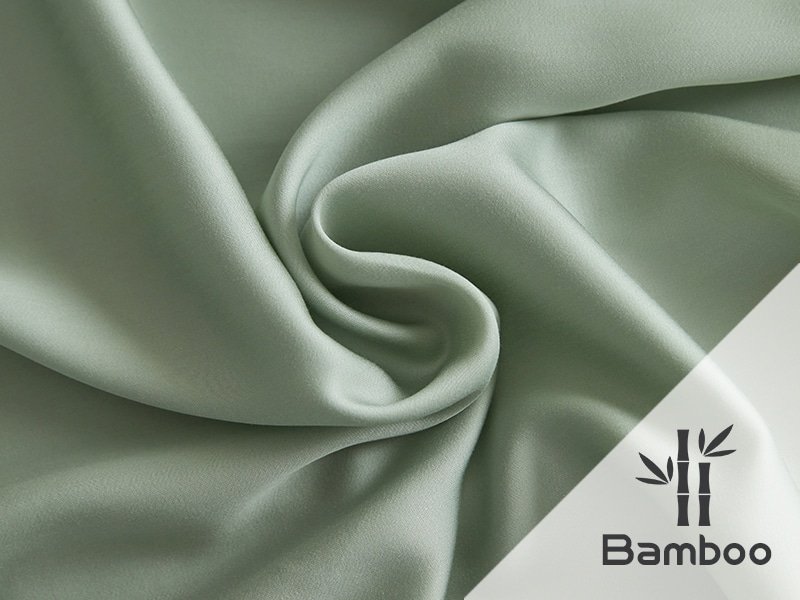Contents
Bamboo or Lyocell: Which Bed Sheet Material is Superior?
Choosing the right bed sheet material significantly impacts your comfort and the environment. Bamboo and lyocell sheets have gained popularity as eco-friendly options. Bamboo sheets, known for their moisture-wicking abilities, keep you cooler than traditional cotton. They also boast antibacterial and hypoallergenic qualities, making them ideal for sensitive skin. Lyocell, often referred to as Tencel, offers a sustainable production process with minimal chemical use. This blog aims to explore Bamboo Bed Sheets VS Lyocell Bed Sheets, helping you decide which material best suits your needs.
Understanding Bamboo Bed Sheets

Production Process
How Bamboo Bed Sheets are Made
Bamboo bed sheets start their journey from the bamboo plant, one of the fastest-growing plants on Earth. Manufacturers harvest bamboo without damaging its roots, allowing it to regrow quickly. This process ensures a continuous supply of raw material. After harvesting, the bamboo undergoes a process to extract cellulose fibers. These fibers are then spun into yarn and woven into fabric, creating the soft and luxurious sheets you enjoy.
Sustainability of Bamboo Production
Bamboo production stands out for its sustainability. The plant absorbs carbon dioxide and releases 35% more oxygen than hardwood trees. It requires no fertilizers or pesticides, making it an eco-friendly choice. Bamboo’s rapid growth and regenerative nature mean it can be harvested every three years without harming the environment. This makes bamboo a renewable resource that supports sustainable living.
Environmental Impact
Eco-friendliness of Bamboo
Bamboo’s eco-friendliness is remarkable. It plays a crucial role in deforestation plans and riverbank restoration projects due to its fast growth and easy propagation. Bamboo sheets are made from natural materials and are sustainably sourced. The manufacturing process uses fewer chemicals, reducing the environmental impact. Bamboo’s moisture-wicking abilities also contribute to its sustainability.
Biodegradability and Recycling
Bamboo sheets are biodegradable, meaning they break down naturally without harming the environment. This biodegradability ensures that when you dispose of them, they won’t contribute to landfill waste. Additionally, bamboo sheets can be recycled, further enhancing their eco-friendly credentials. By choosing bamboo, you support a cycle of sustainability and environmental responsibility.
Pros and Cons
Advantages of Bamboo Bed Sheets
Bamboo bed sheets offer several advantages. They are naturally hypoallergenic and antibacterial, making them ideal for sensitive skin. Their moisture-wicking properties keep you cool and comfortable throughout the night. Bamboo sheets are also soft and luxurious, providing a high level of comfort. Their durability ensures they last longer, offering good value for money.
Disadvantages of Bamboo Bed Sheets
Despite their benefits, bamboo bed sheets have some drawbacks. They can be more expensive than traditional cotton sheets. Bamboo sheets may also require special care during washing to maintain their quality. Additionally, not all bamboo sheets are created equal; some may involve chemical processes that reduce their eco-friendliness. It’s essential to choose sheets with proper certifications to ensure sustainability.
Cost Considerations
Price Range of Bamboo Bed Sheets
When considering bamboo bed sheets, you will find a range of prices that reflect their quality and production methods. Typically, bamboo sheets can be more expensive than traditional cotton sheets. This higher cost often results from the sustainable practices involved in their production. Bamboo, as a renewable resource, grows rapidly without the need for fertilizers or pesticides. This eco-friendly approach contributes to the overall cost. However, the investment in bamboo sheets often translates to better quality and longevity.
Value for Money
Bamboo bed sheets offer excellent value for money due to their durability and comfort. You benefit from their hypoallergenic and antibacterial properties, which make them ideal for sensitive skin. The moisture-wicking abilities of bamboo sheets keep you cool and comfortable throughout the night. Although the initial cost may be higher, the long-lasting nature of bamboo sheets means you won’t need to replace them as frequently as other materials. This durability, combined with their luxurious feel, ensures that bamboo sheets provide a worthwhile investment for your bedding needs.
Understanding Lyocell Bed Sheets
Production Process
How Lyocell Bed Sheets are Made
Lyocell bed sheets originate from wood pulp, primarily sourced from eucalyptus trees. Manufacturers dissolve the pulp in a non-toxic solvent, creating a solution that is then extruded through small holes to form fibers. These fibers are spun into yarn and woven into fabric. The process uses a closed-loop system, which recycles water and solvents, minimizing waste and environmental impact. This method ensures that lyocell sheets maintain their eco-friendly reputation.
Sustainability of Lyocell Production
Lyocell production stands out for its sustainability. The closed-loop process significantly reduces chemical waste, making it more environmentally friendly than traditional methods. Eucalyptus trees, the primary source of lyocell, grow quickly and require less water than cotton. This efficient use of resources contributes to lyocell’s status as a sustainable choice for bedding.
Environmental Impact
Eco-friendliness of Lyocell
Lyocell sheets are renowned for their eco-friendliness. The production process minimizes environmental harm by recycling solvents and reducing water usage. Eucalyptus trees, used in lyocell production, grow on non-arable land, preserving valuable agricultural space. By choosing lyocell, you support a sustainable cycle that prioritizes environmental health.
Biodegradability and Recycling
Lyocell sheets are biodegradable, breaking down naturally without leaving harmful residues. This biodegradability ensures that when you dispose of them, they won’t contribute to landfill waste. Additionally, lyocell sheets can be recycled, further enhancing their eco-friendly credentials. Opting for lyocell supports a sustainable lifestyle and reduces your environmental footprint.
Pros and Cons
Advantages of Lyocell Bed Sheets
Lyocell bed sheets offer numerous benefits. They are incredibly soft and smooth, providing a luxurious feel. Their breathability ensures you stay cool and comfortable throughout the night. Lyocell sheets also resist wrinkles, making them easy to maintain. Their hypoallergenic properties make them suitable for sensitive skin, offering a comfortable and healthy sleep environment.
Disadvantages of Lyocell Bed Sheets
Despite their advantages, lyocell bed sheets have some drawbacks. They can be more expensive than other materials due to the sustainable production process. Special care may be required during washing to maintain their quality. Additionally, not all lyocell sheets are created equal; some may involve processes that reduce their eco-friendliness. It’s crucial to choose sheets with proper certifications to ensure sustainability.
Cost Considerations
Price Range of Lyocell Bed Sheets
When you explore the market for Lyocell bed sheets, you’ll notice a variety of price points. These sheets often fall into a higher price range compared to traditional cotton sheets. The cost reflects the sustainable production process and the quality of materials used. Lyocell, derived from eucalyptus trees, involves a closed-loop manufacturing system that minimizes waste and environmental impact. This eco-friendly approach contributes to the overall expense. However, the investment in Lyocell sheets often translates to superior comfort and longevity.
Value for Money
Lyocell bed sheets offer excellent value for money due to their numerous benefits. You will appreciate their softness and breathability, which ensure a comfortable night’s sleep. The hypoallergenic properties make them ideal for sensitive skin, providing a healthy sleep environment. Although the initial cost may be higher, the durability of Lyocell sheets means you won’t need to replace them as frequently as other materials. This longevity, combined with their luxurious feel, ensures that Lyocell sheets provide a worthwhile investment for your bedding needs.
Bamboo Bed Sheets VS Lyocell Bed Sheets
Comfort and Feel
Softness and Texture Comparison
When it comes to softness, both bamboo and lyocell sheets offer a luxurious feel. Bamboo sheets provide a silky texture that many find soothing against the skin. They are ideal for those who appreciate a gentle touch. On the other hand, lyocell sheets, often made from eucalyptus wood pulp, deliver an exceptionally smooth surface. This smoothness enhances the overall comfort, making lyocell a popular choice for those seeking a plush sleeping experience.
Breathability and Temperature Regulation
Breathability plays a crucial role in maintaining a comfortable sleep environment. Bamboo sheets excel in moisture-wicking, keeping you cool and dry throughout the night. This property makes them suitable for hot sleepers or those living in warmer climates. Lyocell sheets also offer excellent breathability, with the added benefit of temperature regulation. They adapt to your body temperature, ensuring you remain comfortable regardless of the season.
Durability and Maintenance
Longevity of Bamboo vs Lyocell
Durability is an essential factor when choosing bed sheets. Bamboo sheets are known for their strength and longevity. They withstand frequent washing without losing their softness or integrity. Lyocell sheets, while also durable, may require more careful handling to maintain their quality over time. Both materials offer long-lasting performance, but bamboo sheets might edge out slightly in terms of resilience.
Care and Maintenance Requirements
Proper care extends the life of your bed sheets. Bamboo sheets typically require gentle washing and air drying to preserve their texture. Avoiding harsh detergents helps maintain their natural properties. Lyocell sheets, due to their delicate fibers, also benefit from gentle washing. They resist wrinkling, making them easier to maintain. Following care instructions ensures both types of sheets remain in excellent condition.
Environmental and Ethical Considerations
Overall Environmental Impact
Both bamboo and lyocell sheets boast eco-friendly credentials. Bamboo production involves minimal chemical use and supports sustainable practices. It absorbs carbon dioxide and releases more oxygen than many other plants. Lyocell, produced through a closed-loop system, minimizes waste and environmental harm. However, studies indicate that lyocell fabric may have a higher carbon footprint compared to other materials like cotton and polyester. Despite this, its sustainable production process remains a significant advantage.
Ethical Production Practices
Ethical production practices are vital for environmentally conscious consumers. Bamboo sheets often come from responsibly managed plantations, ensuring minimal impact on natural habitats. Lyocell sheets, derived from sustainable wood pulp, prioritize ethical sourcing. The closed-loop manufacturing process further enhances their eco-friendliness by recycling water and solvents. Choosing either material supports ethical and sustainable bedding options.
FAQs
Common Questions about Bamboo and Lyocell Bed Sheets
Which is better for sensitive skin?
When you have sensitive skin, choosing the right bed sheet material becomes crucial. Both bamboo sheets and lyocell sheets offer hypoallergenic properties, making them suitable for sensitive skin. Bamboo sheets naturally resist allergens and bacteria, providing a clean and comfortable sleeping environment. They also have a silky texture that feels gentle against the skin.
On the other hand, lyocell sheets, often made from eucalyptus wood pulp, are renowned for their smoothness and softness. This makes them an excellent choice for those with delicate skin. The moisture-wicking properties of lyocell help regulate body temperature, reducing the risk of irritation caused by sweat. Ultimately, both materials are great options, but your personal preference for texture and feel might guide your decision.
Are there any health concerns?
You might wonder if there are any health concerns associated with bamboo or lyocell bed sheets. Fortunately, both materials are generally safe and beneficial for your health. Bamboo sheets are naturally antibacterial and hypoallergenic, which helps reduce the presence of dust mites and allergens. This makes them ideal for individuals with allergies or respiratory issues.
Lyocell sheets also offer health benefits. Their production process involves minimal chemical use, ensuring a safer product for you. The closed-loop system used in lyocell manufacturing recycles water and solvents, minimizing environmental impact and potential chemical exposure. Additionally, lyocell’s moisture-wicking properties help keep your skin dry and comfortable, reducing the risk of skin irritation.
In summary, both bamboo and lyocell sheets provide health advantages, making them excellent choices for a safe and comfortable sleep environment.
In comparing bamboo and lyocell bed sheets, both materials offer unique benefits. Bamboo sheets excel in moisture-wicking and hypoallergenic properties, making them ideal for sensitive skin. Lyocell, with its eco-friendly production and smooth texture, provides exceptional comfort and breathability.
- Key Findings:
- Bamboo sheets are naturally antibacterial and durable.
- Lyocell sheets boast a sustainable closed-loop production process.
- Final Recommendation:
- Choose lyocell for superior sustainability and softness.
- Opt for bamboo if you prioritize moisture-wicking and durability.
Ultimately, consider your personal preferences and needs to make the best choice for your bedding.





